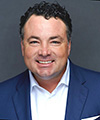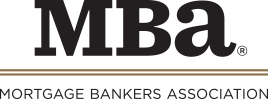
Leveraging Non-QM Flexibility and Personalization to Drive Home Equity Market Growth
Tom Davis is Chief Sales Officer with Deephaven Mortgage. Founded in 2012, Deephaven led the creation and development of the non-QM/non-agency mortgage market and makes its loans available through mortgage brokers and loan officers in addition to buying loans from correspondents.
The rise of home equity lending is a frequent topic of conversation in the mortgage industry right now. Tom Davis, chief sales officer with Deephaven Mortgage, is excited about non-QM lenders’ ability to accelerate this segment’s growth. He shared his thoughts with MBA NewsLink.
MBA NewsLink: What makes you so bullish on the home equity lending segment this year?

Tom Davis: All the drivers of a strong market have converged. First, there are abundant funds for homeowners to draw from. As ICE has reported, U.S. tappable equity soared to $11.5 trillion entering Q2 2025 and second lien equity withdrawals reached almost $25 billion, “the largest first quarter volume in 17 years…”
The demand for these funds to finance home improvements is likely to remain strong. Consider the sizable population of homeowners who plan to stay in their current homes. Some percentage of them will need a new kitchen or bathroom or perhaps want to renovate so they can live on one floor. One-third of Baby Boomer homeowners responding to a Redfin-commissioned survey say they will never sell, and today’s average U.S. home is 40 years old. Those numbers suggest an important home improvement/renovation market for savvy loan officers to pursue before others in their community—including local servicers—get to them first.
Americans also need debt relief. They owe almost $1.2 trillion on their credit cards, and today’s average credit card interest rate is 24.33%. Being able to use a home equity loan or HELOC to lower that debt should be an attractive option for many borrowers.
MBA NewsLink: Why do you believe that the market has even more potential with the non-QM industry behind it?
Tom Davis: There is still a large population of borrowers who are unable to qualify for an agency home equity product (or primary agency mortgage, for that matter). The non-QM industry has surged forward by meeting their financing needs. Last year, it was the fastest growing mortgage industry segment, and it should reach $80-$100 billion in volume this year. Two primary groups of non-QM customers include:
- Real estate investors, who are responsible for 20-25% of home purchases. Many of them, such as LLCs, are not eligible for agency home equity loans.
- The 15 million self-employed workers in the U.S.—some of whom cannot obtain an agency home equity loan or HELOC based on the income reported on their tax returns.
The non-QM industry has not only evolved to help mortgage brokers and loan officers meet their pent-up demand, but it has built an infrastructure to help them improve their success rate.
MBA NewsLink: Could you please elaborate?
Tom Davis: On the product side, the industry has been able to offer more self-employed borrowers alternative home equity solutions by calculating their income using 12 or 24 months of bank statements, 1099s, and one-year profit and loss statements. Debt service coverage ratio (DSCR) loans qualify real estate investors on the cash flow of the subject property. No employment or income documentation is required.
The industry has also been innovative in response to changing economic conditions. DSCR loans with cash-out refinancing options were highly utilized by business-purpose investors when interest rates plummeted. They used the cash to expand their portfolios and maintain their existing properties. Today, investors don’t want to forfeit their low rates in order to obtain the additional liquidity—but they still need cash. Many prefer a non-QM home equity loan for that purpose.
MBA NewsLink: What else is part of the non-QM infrastructure?
Tom Davis: First, flexibility. Because it is not subject to GSE requirements, the non-QM industry is leveraging its unique level of freedom to speedily adapt home equity product features, terms and underwriting guidelines in response to changing customer needs.
Second is personalization. Those on the front lines are easily able to tailor their offerings to borrowers’ individual situations, and often to suggest a few different alternatives. For example, a self-employed or gig economy worker purchasing their second investment property might qualify for a closed-end second mortgage based on alternative income options such as bank statements, or the DSCR income of one of their rental properties.
Third is a focus on education. Expanding into the non-QM home equity space is not the same as starting in the mortgage industry from scratch. Still, meaningful growth requires a new level of product knowledge, an understanding of the non-QM borrower, and skills in marketing to serve a new customer base. Wholesalers recognize this and build education and support into their supplier partnerships. Sometimes it’s a matter of helping the channel simply reorient themselves. For example, they may have robust relationships with local Realtors and may not consider that those Realtors could also be real estate investors in the market for a second lien.
Any closing thoughts you’d like to share?
Tom Davis: Non-QM and home equity lending are likely to remain powerful engines behind the growth of the mortgage industry. By finding and serving new customer segments, and meeting their home equity needs with flexibility, responsiveness, and expertise, I am convinced we have a better chance of driving that upswing.
(Views expressed in this article do not necessarily reflect policies of the Mortgage Bankers Association, nor do they connote an MBA endorsement of a specific company, product or service. MBA NewsLink welcomes submissions from member firms. Inquiries can be sent to Editor Michael Tucker or Editorial Manager Anneliese Mahoney.)
